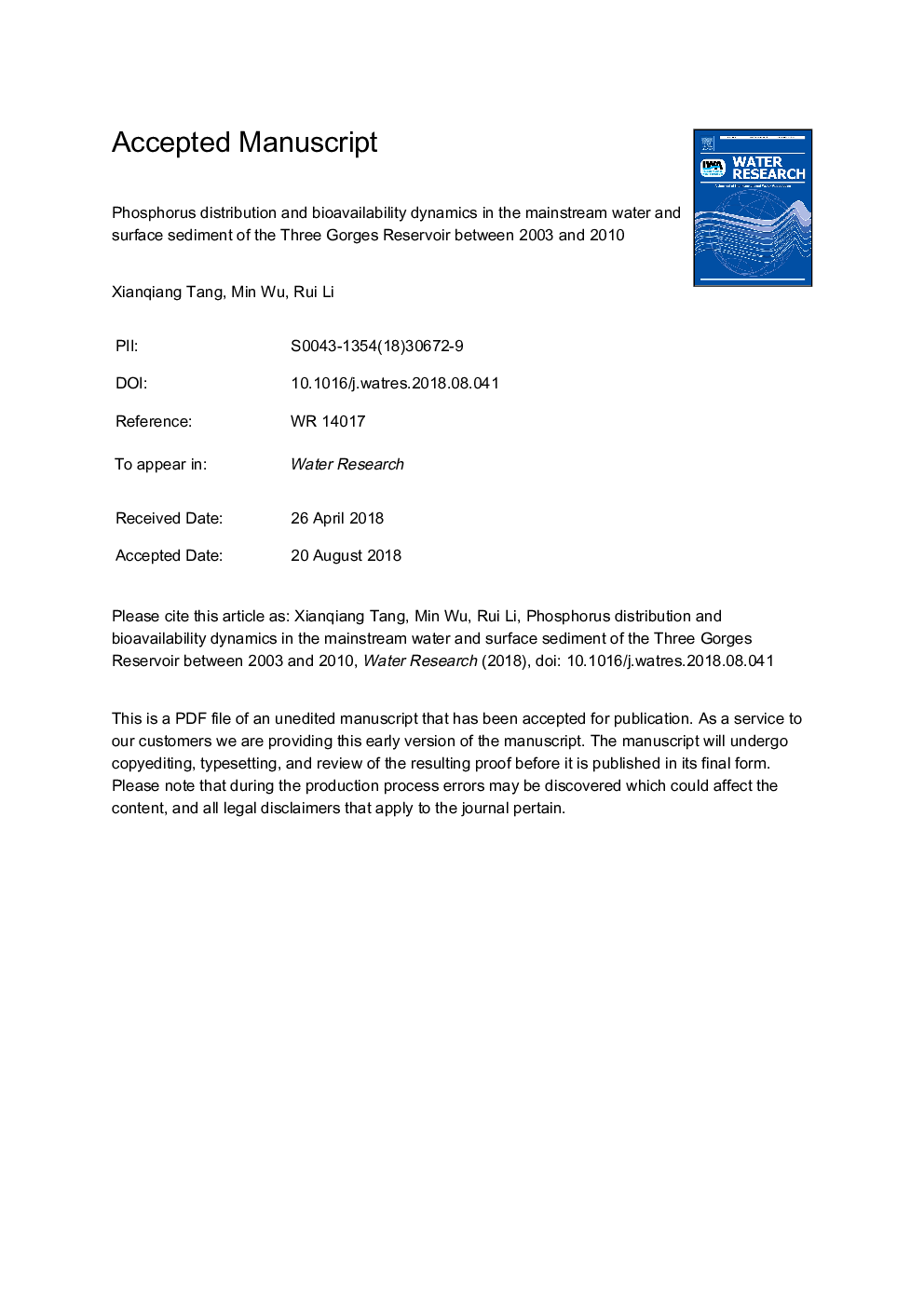| کد مقاله | کد نشریه | سال انتشار | مقاله انگلیسی | نسخه تمام متن |
|---|---|---|---|---|
| 10115933 | 1623023 | 2018 | 48 صفحه PDF | دانلود رایگان |
عنوان انگلیسی مقاله ISI
Phosphorus distribution and bioavailability dynamics in the mainstream water and surface sediment of the Three Gorges Reservoir between 2003 and 2010
ترجمه فارسی عنوان
توزیع فسفر و دینامیک زیست پذیری در رسوب اصلی جریان آب و رسوب سه مخزن گران بین سال های 2003 و 2010
دانلود مقاله + سفارش ترجمه
دانلود مقاله ISI انگلیسی
رایگان برای ایرانیان
کلمات کلیدی
سه غبار مخزن، ستون آب، قابلیت دسترسی بیولوژیک، یوتروفیزیک، شکوفه قلیایی،
موضوعات مرتبط
مهندسی و علوم پایه
علوم زمین و سیارات
فرآیندهای سطح زمین
چکیده انگلیسی
A staged impoundment scheme was adopted for the Three Gorges Reservoir (TGR) to increase its maximal water level from 135 to 175â¯m between 2003 and 2010; however, the variation in phosphorus distribution and its bioavailability in the water column and surface sediment, during this period is still uncertain. Field surveys and historical monitoring data related to water column, surface sediment, total phosphorus (TP) and fractional contents, and water bloom characteristics were used to identify the effects of staged impoundment on phosphorus distribution and water eutrophication in the TGR. It is indicated that retention of particulate phosphorus (PP)-bounded suspended sediment (SS) caused an average of 4.69 %-12.28% decline in water column TP between 2004 and 2010 compared with that measured between 1998 and 2003. Phosphorus did not notably accumulate in the mainstream surface sediment when the impoundment water level increased from 135 to 175â¯m. The mainstream surface sediment was relatively clean, and the release of sediment bioavailable P (Bio-P) contributed to 0.013% of dissolved phosphorus (DP) concentrations in the water column when impoundment of the TGR was 175â¯m. An increase in dissolved Bio-P in the water column and weak hydrodynamic conditions stimulated the outburst of water bloom in more tributaries when the impoundment water level increased from 135 to 175â¯m, and the dominant algae gradually evolved from river-dominated species to lake-dominated species. Therefore, it is necessary to limit the entry of DP from the upstream and tributaries into the TGR and manage TP loads in the TGR as a lake rather than as a river in the future.
ناشر
Database: Elsevier - ScienceDirect (ساینس دایرکت)
Journal: Water Research - Volume 145, 15 November 2018, Pages 321-331
Journal: Water Research - Volume 145, 15 November 2018, Pages 321-331
نویسندگان
Xianqiang Tang, Min Wu, Rui Li,
